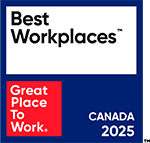
Article
The Most Common Misconceptions About Crafting An Organization’s Purpose
August 30, 2022
The term “purpose” is probably one of the most commonly used and misunderstood business terms of the moment.
“Purpose” refers to an organization’s fundamental reason for existing. It should be meaningful and enduring and ultimately align with long-term financial performance, as well as provide a clear context and framework to guide teams in their daily decision-making. The organization’s purpose is also the rallying cry for employees. Across sectors, however, the term “purpose” has become murkier as leaders and teams have begun intermingling the concept of their organization’s purpose with the need to have it speak to a larger “social purpose.”
However, having an organizational purpose should not be confused with having a social sense.
The growing call from leaders and teams to reposition or infuse a social purpose into an existing organization comes from the data case and post-Covid public focus on the role of businesses and brands to drive greater good on crucial issues.
And among the key demographics of Gen Y and Z customers, there is a clear preference for supporting and staying loyal to organizations with a more significant social, cultural, or environmental impact.
As a result, across sectors and in organizations of all sizes and stages, leaders are increasingly pressuring their teams to align or reposition their brand and message with an environmental or social good-related purpose statement- irrespective of how authentic it is.
Unilever is one of the most profile examples of this.
Dove soap was looking to rejuvenate the brand and did so spectacularly with Dove’s now legendary “Campaign for Real Beauty.” This shifted the focus from being about the product to helping their target consumers by leading a new conversation on the unrealistic portrayal of female bodies and beauty in the industry.
The result was that overall sales of Dove products jumped from $2.5 to $4 billion in the campaign’s first ten years. Dove bars became the number one preferred soap brand in the U.S. and Unilever’s best-selling product company-wide. Following on this, the current CEO Alan Jope committed that all 400+ of Unilever’s brands will have a social or environmental purpose in the future.
But this time, the results weren’t what they expected – and the reason why gets to the heart of the challenges businesses have then confuse “purpose” with “social purpose.”
For instance, Unilever brands like Axe deodorant struggled. The Ax user demographic and messaging had been built on speaking to young males with jocular ads and teen humor. In their search for greater social purpose, they looked to change this and swung dramatically to the other side of the spectrum. While the goal was a laudable one – looking to become a thoughtful voice on the issues mean are struggling with, the delivery and resonance were lacking.
The pivot failed and is a reminder that infusing social purpose into an organization has to be done intentionally and authentically – it can’t just be added on as a marketing gimmick or risks the backlash of engaging in “purpose-washing.” Part of the challenge is that who owns social purpose often isn’t apparent within the organization. Hence, it becomes the default area of marketing, which in turn can lead to top-level changes that don’t engage the larger organization. The other component that leaders need to be aware of is that changing industry and cultural norms mean that what might have once been considered sufficient to warrant a purpose brand position is now considered just table stakes.
While every organization and business should have a clear purpose statement that establishes why they do what they do and which serves as a rallying cry for the team – not every purpose needs to align with social or environmental causes, no matter compelling it might seem to try and integrate one in.
This piece was based on insights from Promises Kept, Episode 2: “The Role Of Social Purpose Within An Organization’s Strategy,” featuring Managing Partner Matt Kelly and Principal Laura Richard as they discuss the high-risk and misunderstood role of purpose within an organization.




